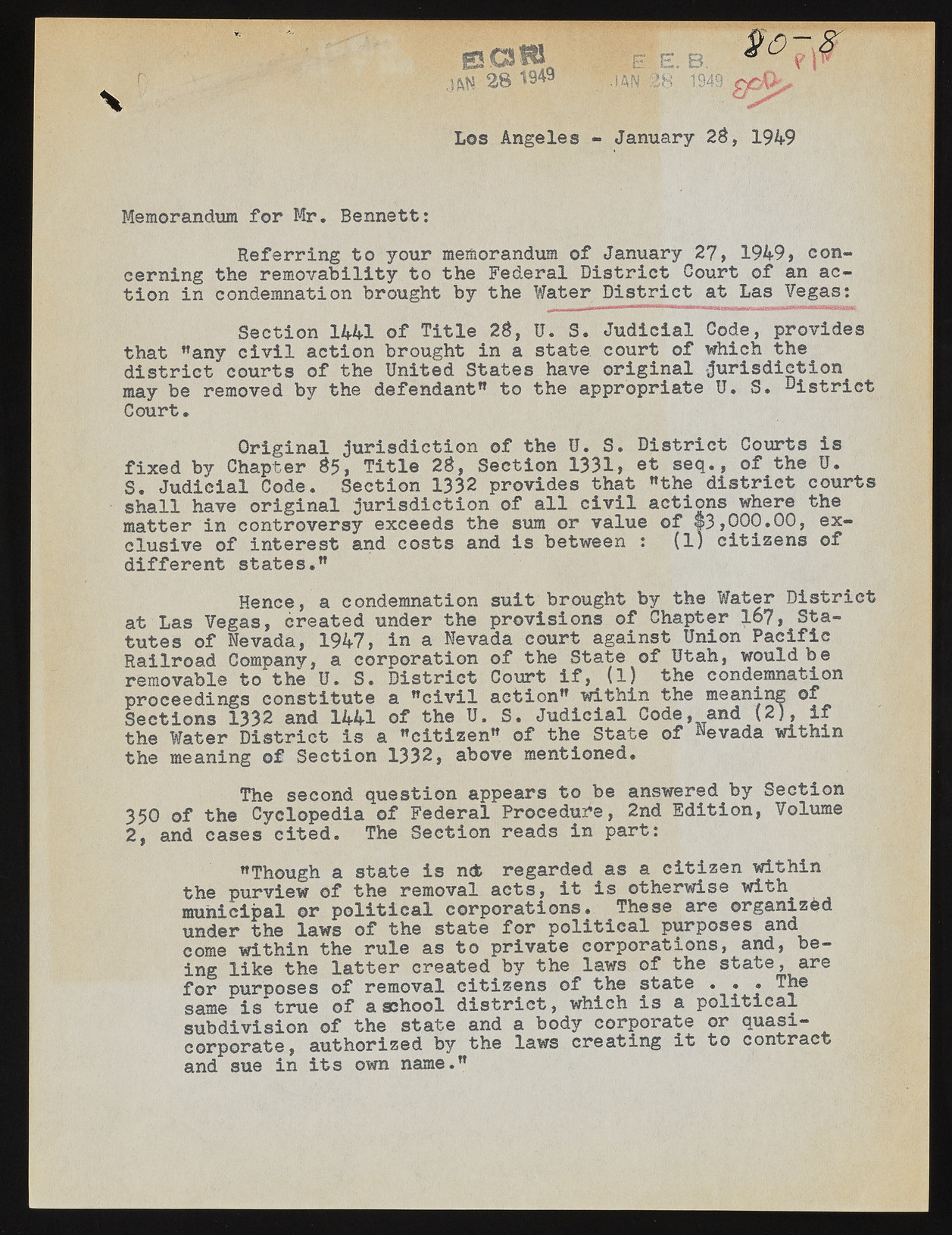Copyright & Fair-use Agreement
UNLV Special Collections provides copies of materials to facilitate private study, scholarship, or research. Material not in the public domain may be used according to fair use of copyrighted materials as defined by copyright law. Please cite us.
Please note that UNLV may not own the copyright to these materials and cannot provide permission to publish or distribute materials when UNLV is not the copyright holder. The user is solely responsible for determining the copyright status of materials and obtaining permission to use material from the copyright holder and for determining whether any permissions relating to any other rights are necessary for the intended use, and for obtaining all required permissions beyond that allowed by fair use.
Read more about our reproduction and use policy.
I agree.Information
Digital ID
Permalink
Details
More Info
Rights
Digital Provenance
Publisher
Transcription
Memorandum for Mr. Bennett: Referring to your memorandum of January 27, 1949, concerning the removability to the Federal District Court of an action in condemnation brought by the Water District at Las Vegas: Section 1441 of Title 2g, U. S. Judicial Code, provides that ”any civil action brought in a state court of which the district courts of the United States have original jurisdiction may be removed by the defendant” to the appropriate U. S. District Court. Original jurisdiction of the U. S. District Courts is fixed by Chapter S5, Title 2S, Section 1331, et seq., of the U. S. Judicial Code. Section 1332 provides that ”the district courts shall have original jurisdiction of all civil actions where the matter in controversy exceeds the sum or value of ©3,000.00, exclusive of interest and costs and is between : (1) citizens of different states.” Hence, a condemnation suit brought by the Water District at Las Vegas, created under the provisions of Chapter 167, Statutes of Nevada, 1947, in a Nevada court against Union Pacific Railroad Company, a corporation of the State of Utah, would be removable to the U. S. District Court if, (1) the condemnation proceedings constitute a ”civil action” within the meaning of Sections 1332 and 1441 of the U. S. Judicial Code, and (2), if the Water District is a ”eitizen” of the State of Nevada within the meaning o f Section 1332, above mentioned. The second question appears to be answered by Section 350 of the Cyclopedia of Federal Procedure, 2nd Edition, Volume 2, and eases cited. The Section reads in part: ”Though a state is ndb regarded as a citizen within the purview of the removal acts, it is otherwise with municipal or political corporations. These are organized under the laws of the state for political purposes and come within the rule as to private corporations, and, being like the latter created by the laws of the state, are for purposes of removal citizens of the state . . . The same is true of a school district, which is a political subdivision of the state and a body corporate or quasi- corporate, authorized by the laws creating it to contract and sue in its own name.”

